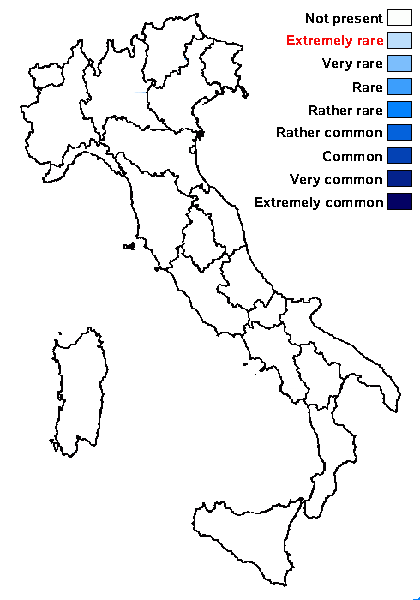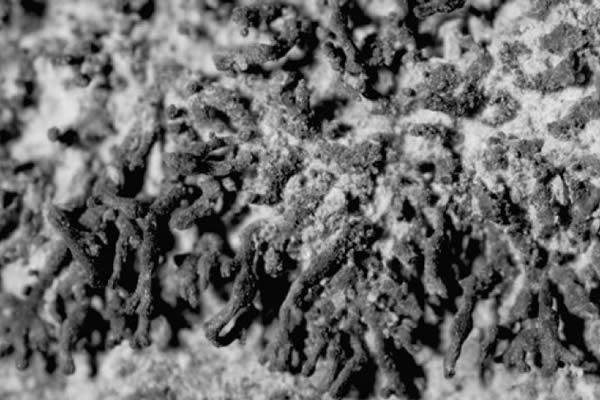Scytinium subtorulosum (Nyl. ex Stizenb.) Otálora, P.M. Jørg. & Wedin
Fungal Diversity, 64, 1: 291, 2013. Basionym: Collema subtorulosum Nyl. ex Stizenb. - Ber. Tät. St. Gall. naturw. Ges.: 265, 1882
Synonyms: Leptogium subtorulosum (Nyl. ex Stizenb.) Degel.
Distribution:
Description: Thallus minutely fruticose, dark olive green or brownish, dull, of loosely adpressed, subcylindrical to slightly flattened, somehow knotty, dichotomously branched, 1-4 mm long, c. 0.2-0.35 mm thick lobes, forming deeply branched rosettes, the lobes loosely appressed (the tips mostly free), the central ones ascending, sometimes with globose to subcylindrical isidia-like lobules, the surface dull, roughened, uneven. Pseudocortex only partially developed, consisting of a single layer of irregularly isodiametrical, c. 5 µm wide cells; central parts of lobes with irregularly arranged hyphae, the cells somewhat elongated to angular, to 15 x 3-5 µm. Apothecia and pycnidia extremely rare. Photobiont cyanobacterial (Nostoc, the cells in short, twisted chains). Spot tests: all negative. Chemistry: without lichen substances.Note: a species described from Switzerland, growing on long-time moist calcareous rocks and on acidic rock irrigated by calciferous water along creeks and rivers, sometimes even submerged; widespread in Europe (including Macaronesia) but rarely collected. From the Alps there are only a few scattered, historical records, all of them outside Italian territory. To be looked for in the Italian Alps.
Growth form: Fruticose
Substrata: rocks
Photobiont: cyanobacteria, filamentous (e.g. Nostoc, Scytonema)
Reproductive strategy: mainly asexual, by thallus fragmentation
Periodically submerged (e.g. in creeks)

Predictive model
Growth form: Fruticose
Substrata: rocks
Photobiont: cyanobacteria, filamentous (e.g. Nostoc, Scytonema)
Reproductive strategy: mainly asexual, by thallus fragmentation
Periodically submerged (e.g. in creeks)

Predictive model


